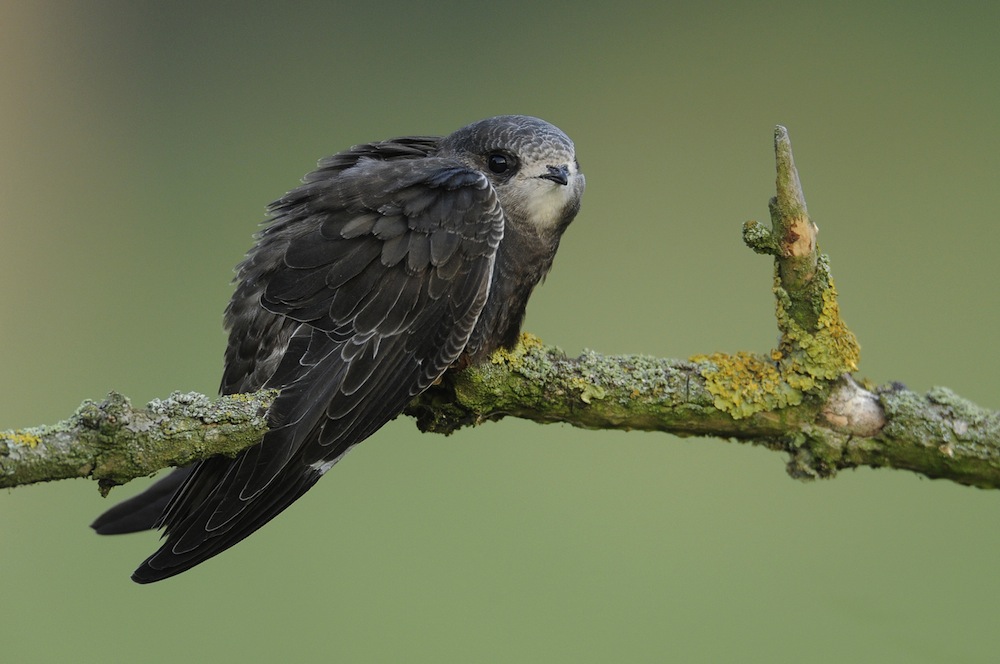With their unique call and flitting movement, swifts are heralds of warmer weather who head off on an epic journey over the winter. Ed Andrews explains how we can ensure these distinctive birds keep coming back to our shores…
The turning of the year can be a period of reflection when we look back at the key moments through the previous 12 months and look to the future with a renewed sense of hope. This issue, I’m taking you back to one of those moments at the juncture between the end of summer and the onset of autumn. With so many problems facing our wildlife, I’ll bring good news that one of the region’s largest affordable housing providers is leading the way in making their new developments wildlife-friendly.
The beginning of the end…
I consider myself very lucky to live in a town where swifts are a daily sight through the summer months. These birds arrive in May and their distinctive ‘screaming’ can be heard each evening as they circle high over our garden in Bridgnorth, catching flying insects. By the time you read this, ‘our’ swifts will be feasting on flies somewhere south of the Sahara in Africa. This year I observed our resident swift population closely in the hope that I could accurately pinpoint the moment when they left. This moment holds some significance as swifts are one of the first of our avian summer visitors to leave and their departure represents the ‘beginning of the end’ of summer.
It had been a damp and overcast day in early August but, as afternoon slipped into evening, the dense cloud started to break up into towering columns. Charcoal grey in colour, they were being back-lit by the dying embers of a sinking sun. It was as if some great painter was slowly adding one layer of paint after another. From a high point at the end of my road, I was looking out across a sea of chimney pots and roof tiles to the final throes of this dramatic sunset.
Home to roost
With the light levels dropping, the swifts started flying much lower, swooping at roof height. Suddenly a swift disappeared into the roof eaves of a house just around the corner from where I live. Another bird entered a roof opposite. Although the swifts had finished nesting, these birds were returning to the nest site to roost for the night. Sunset is the best time to identify nest sites and, prior to that evening in August, I had no idea where our local swifts nested. That was the last time I saw the swifts. The next few evenings, I looked again but it soon became apparent that they’d gone… taking a little bit of summer with them.
Ringing studies of swifts have revealed secrets about their migration routes. After leaving our shores, they fly through France and Spain and then follow the Atlantic seaboard of Africa before crossing to central Africa where they spend the winter. Any actions that reduce the abundance of flying insects along their migration route will have a negative impact on the swift population. Their nesting sites in the UK must also be cared for, highlighting the fact that swift conservation requires international efforts.
Swifts nest in holes in buildings. These holes are often behind flashings, under roof tiles and inside gables. As houses are modernised and repaired, longer-lasting building materials are used. This can exclude the swifts from nest sites. It does not have to be like this. There are a number of options for conserving swift populations whilst still maintaining your property and also ways of making new developments suitable for swifts to use.
Building for the future
I was very encouraged to hear that the Wrekin Housing Trust has taken this message on board. When building new properties in Ludlow, the Trust worked with the builders to install ‘swift bricks’, which provide a nesting cavity for swifts. Members of Shropshire Swift Group were involved with the project and will be monitoring uptake of the boxes. These swift bricks and other bird and animal boxes are now installed in the majority of the Trust’s new developments.
The Wrekin Housing Trust own 12,000 properties throughout the Midlands. An organisation of this size has the ability to make a real difference in nature conservation. As we approach the New Year with hopes for more wildlife-friendly developments, we can only hope other big companies follow their example.
Do one thing for wildlife this month…
We all have a part to play in making sure our local swift population keep returning. This month, why not put up a swift nest-box on the outside of your home? This will give it a chance to get weathered in readiness for the arrival of the swifts in May. It has been proven that uptake of these boxes can be increased by playing the distinctive calls of swifts from a stereo or speakers nearby. We will certainly be trying this method next summer to try and tempt swifts into our nest-box. For more information, visit swift-conservation.org.







